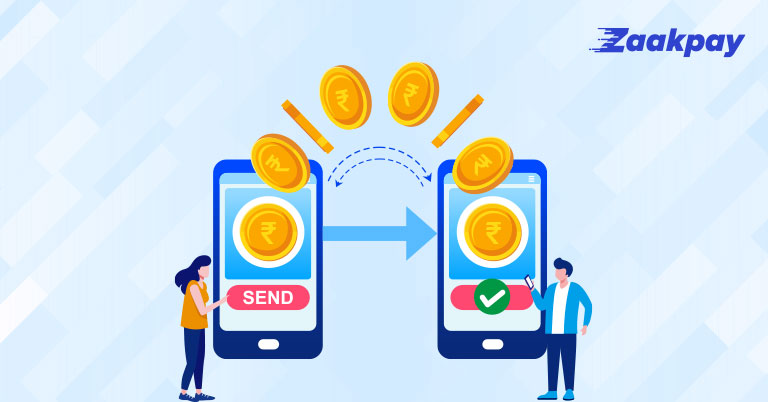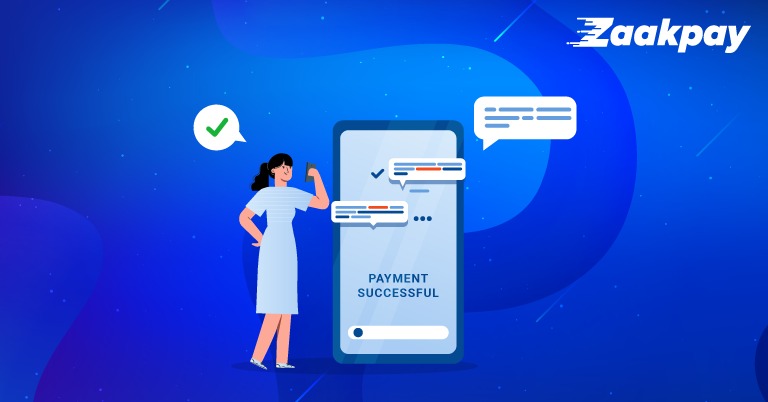In the current digital world, online payments have become an integral component of our lives. Whether buying an item, booking a hotel room, or paying your phone bill, every transaction is backed by digital payments. According to a survey by Statista, the total number of digital payment transactions were around 44 billion in India in 2021. In this online payment world, the phrase “transaction success rate” is important and gets used quite often. Transaction success rate reflects how you get paid for your sale or service and how easy the experience is for your customers. Low transaction rates can hamper businesses and make them lose up to 30% of their revenue and around 33% of their customers who encounter failed transactions. This causes the brand to lose the value earned over the years. This blog dives deep into what transaction success rate means and why it is important for businesses.
What is the Transaction Success Rate?
Transaction success rate is the percentage of attempted online payments that are successfully completed and reflects the number of payments that the business received for every 100 payments made by a customer on a website or app.
For instance, if one hundred payments were attempted and only 50 were successful, the transaction success rate would be 50%. Although these payment attempts also include re-attempts made by customers, studies say that over 33% of failed online payments are not re-attempted.
Customers today expect a smooth and hassle-free transaction experience. Any additional step or frustration in the journey from adding to cart to check out increases the chance of cart abandonment and directly impacts the business.
Payment failure is one of the main reasons for transaction failure, and businesses have no control over this, which means that all cost incurred for hiring a customer and retaining them is of no use.
Importance of Transaction Success Rate and Impact of Transaction Failure
In our ever-growing digital world, digital channels have churned the maximum revenue for businesses as customers have made online channels their default option for payment for goods and services.
As consumers look forward to a smooth transacting experience with digital payment solutions each time they are online, failed transactions are one of the top reasons for customers turning away from a brand and moving on to the competitor. Around 33% of customers abandon a declined transaction, and over 28% of abandoned shopping carts are due to payment failures. If these transactions turn out to be successful, it means a boost in revenue of up to 30% for businesses. It also means preventing customer acquisition costs and loss of value they would provide to your business.
What factors influence the transaction success rate?
This question can be rightly answered by understanding the reasons for transaction payment failures. Payment failures can occur due to various reasons, right from incorrect OTP to delayed response or problems in the bank server. The most common causes of payment failures are:
- Customers: Customers account for around 67% of failed payments, according to a survey. While some of them were deliberate cancellations, others were due to a customer taking too long to complete payment or insufficient funds in the payment method, insufficient funds in the bank, and a few were due to malicious attempts to use a stolen card.
- Payments service provider: Payments service provider and the associated bank contribute to around 27% of failed payments. Out of this, around 20% are due to errors in a transaction between online payment service providers and intermediaries such as banks, payment apps, and card companies.
How can Businesses improve transaction success rates?
There are many steps that businesses can take to avoid transaction payment failures and improve the transaction success rate. These steps can result in better customer retention, enhanced customer experience, and more value to the business. They are:
- Simple checkout – The smoother the checkout process, the lesser the chances of the user canceling payment or abandoning the shopping cart. A tedious and long checkout process can frustrate customers.
- Reduced Steps before Payment – Ensure that the customers need not enter too many details before reaching the payment page. Only ask for basic details such as customer contact information to offer a good customer experience. They must spend minimal time and effort to complete the buying process to ensure customer satisfaction and earn valuable business revenue.
- Do not make account creation mandatory – While getting customer information is vital for any business, do not make account creation mandatory. It is because a major percentage of shopping cart abandonment is due to the need to create an account. The best way here is to enable guest checkout and only collect the customer’s email and phone number during checkout as a part of the delivery process.
- Save Payment Info – Save the customer payment info for quick retrieval in the future. This feature can be a blessing for the customers as no one likes to enter card numbers or UPI Payment Ids repeatedly. Making it automatically appear for the customers makes it easier for them, speeds up the checkout process, and gives the business their revenue. First-time buyers can be offered this checkout experience by online payment solutions like Zaakpay in partnership with merchants.
- Several Payment Options – For payments to be smooth and flexible for the customer, the payment provider must offer a choice of several payment methods to them, right from cards to UPI. Payment through the EMI option can also be offered to customers. A digital payment system provider like Zaakpay offers every potential payment mode possible to the customer to ensure transaction success and customer satisfaction.
- Dynamic Routing – Up to 27% of failed payments occur due to the inefficiency of the payment gateway. Therefore, the business must integrate with multiple online payments service providers such as Zaakpay so that even if one of them is facing a server issue or downtime, the other ones can complete the payment process. Dynamic routing can significantly reduce payment failures and increase the transaction success rate and business revenue.
Enhance your Transaction Success Rate Through the Zaakpay Payment Gateway
A high transaction success rate can hugely depend on your selection of the payment gateway. Zaakpay online payment system has all features that can make a transaction successful from both the merchant’s and customers’ end.
Zaakpay offers seamless integration of the payment gateway, banking services, and payment methods such as UPI to ensure a high success rate of transactions. Using Zaakpay, the digital payment system for your transactions ensures a smooth customer experience and a very high success rate for all your online transactions and customer payments.
The Final Word
For a good success rate, businesses must consider various factors as it possibly impacts business success. They must leverage an efficient online payment system like Zaakpay to ensure an industry-level transaction success rate to propel business growth.
Follow Us on:

